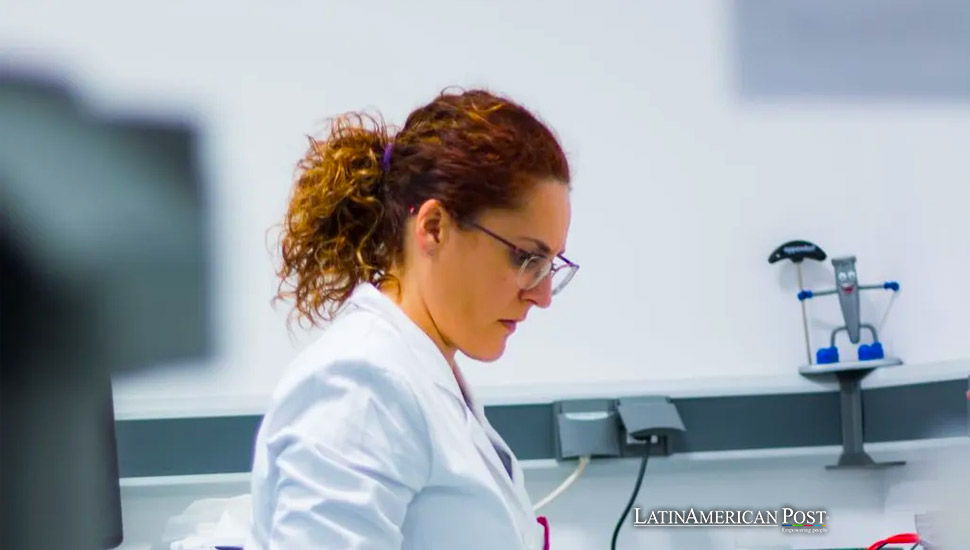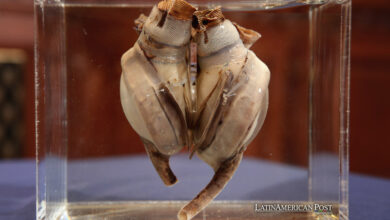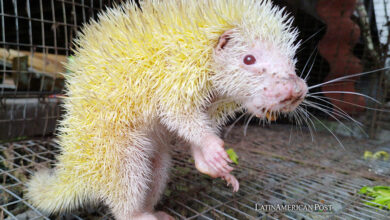A Mexican Scientist’s Fight Against Rare Genetic Disease

María José Currás, a scientist from Puebla, Mexico, embarked on a seven-year journey that would test her professionally and emotionally as she investigated a rare genetic disorder in identical twins from Spain, leading to groundbreaking insights. Wired first reported on this compelling story, highlighting the challenges and triumphs of Currás’ work.
In scientific research, some discoveries come from meticulously planned studies, while others emerge from unexpected encounters. The latter was true for María José Currás, a Mexican scientist originally from Puebla. Her path to studying a rare genetic disease was neither planned nor anticipated, but it became a defining chapter in her career and life. Wired first reported on this compelling story, highlighting the challenges and triumphs of Currás’ work.
The story began in 2015 when Currás worked at the Instituto de Investigaciones Sanitarias de Santiago de Compostela in Galicia, Spain. At the time, she focused on immunology and pediatric infections, far removed from the world of rare genetic disorders. However, fate had other plans. A case involving identical twin girls, Celia and Cayetana, landed on her desk. The twins, born in Galicia, had the same genetic mutation, yet their lives took drastically different paths. Celia appeared to live an everyday life, while Cayetana battled a rare and debilitating disease known as progressive osseous heteroplasia (HOP). This condition causes the bone to form in places where it should not, such as skin and muscles.
HOP is an ultra-rare genetic disorder, with only 60 known cases worldwide. The fact that it affected identical twins—one showing severe symptoms while the other remained unaffected—made this case unique and intriguing for scientific study. “The case of Cayetana and Celia chose me,” Currás explained in an interview with Wired. “In the lab, we don’t typically work with ultra-rare diseases. Our research group focuses on other areas, but this case was exceptional.”
Currás had initially been working on her doctoral thesis, testing a vaccine to immunize pregnant women and prevent whooping cough in newborns. However, when the company supplying the nitrogen to preserve her samples failed, her research hit a dead end. With her original project stalled, Currás studied the twins’ condition. The parents of Celia and Cayetana had already established the Galician Association for Progressive Osseous Heteroplasia and raised funds to support the research. “In 2017, they made the first donation of 20,000 euros, and that’s how we started,” Currás recalled to Wired.
The Complex Path of Experimental Research
For the next five years, Currás delved into the experimental side of the research, a process fraught with challenges. “It was frustrating at times,” she admitted in her Wired interview. “I was racing against the clock, hoping that something I did would directly impact the treatment of the disease.” Although clinical decisions were not in her hands, any information she could provide was invaluable.
Understanding the disease required a multidisciplinary approach, and Currás sought collaboration from a lab specializing in musculoskeletal diseases. Together, they worked on primary cell cultures and designed experiments to study cellular differentiation. One of the most crucial aspects of the research was obtaining tissue samples from Cayetana. “The only way to slightly alleviate the pain caused by the disease is through surgery, which explains why Cayetana had to have her legs amputated,” Currás explained. She would be in the operating room, ready to receive tissue samples to create cell cultures for her experiments.
To understand the disease at its earliest stages, Currás and her team created a genetically edited stem cell model to study the condition’s progression. Since they couldn’t ethically or practically use the twins’ stem cells, they introduced the HOP mutation into a purchased cell line. This allowed them to conduct tests and better understand how the disease developed.
“My work was focused on understanding what was happening at the cellular level—why a cell that was supposed to become fat tissue was instead turning into bone,” Currás said. This research was crucial in explaining why, despite being genetically identical, one twin suffered from the disease while the other did not.
The Emotional Weight of Personal Connections
The complexity of the research was not limited to the scientific challenges. For Currás, this was not just another case study; it was deeply personal. “There is a significant emotional burden involved,” she said in her interview with Wired. “Talking about a rare disease and seeing the suffering of the patients and their families changes you.” Unlike many scientific studies where the subjects are anonymous, Currás knew the twins and their parents personally, which added an emotional layer to her work.
One of the most challenging moments for Currás came on the day she defended her thesis. The twins’ parents, along with the girls themselves, attended the defense. Seeing the father move to tears during the session and hearing the mother’s words afterward was overwhelming for Currás. “It was tough to hold back my emotions,” she confessed to Wired.
Writing the thesis was the most challenging phase for Currás, which took around eight months. During this time, she struggled with imposter syndrome, compounded by the sudden death of her mother. Unable to return to Mexico for the funeral because she was in the middle of finalizing her thesis, Currás pressed on, driven by the importance of her work.
After submitting her thesis, she contacted Loló, the twins’ mother, to share the news. “I told her that in the end, I hadn’t achieved much,” Currás recounted in her Wired interview. But Loló’s response was liberating: “I know this won’t help my daughter, but it will help someone else, and that’s a good thing. I’m supporting this cause for that reason.”
A Passionate Pursuit in the Face of Adversity
For Currás, the passion for research lies in its potential to unlock the imagination. “Research allows you to develop your ideas. Your ideas might seem a bit absurd, but when you have a lab and a team by your side, that idea can turn into a major project,” she said in her Wired interview.
However, she was well aware that research is not an easy path. The challenges of pursuing a PhD tested her passion, but she remained committed. “Research is not a well-valued career,” she noted. “It’s not just a problem in Mexico; finding resources is also a challenge for research centers in Spain. When you see what a footballer earns compared to a researcher, you think, ‘Something is wrong.'”
Despite these challenges, Currás has continued her work at the research institute, leading studies on HOP and other topics. While her research may not have found a definitive cure for HOP, the knowledge and insights she gained have laid the groundwork for future treatments. “The dissemination of knowledge is always important, even if the results are negative. If a doctor in Russia tomorrow has a case and wants to provide treatment, they will find a published study,” she said in her Wired interview.
The case of Cayetana and Celia, identical twins with diverging fates, has not only advanced our understanding of a rare genetic disease but also highlighted scientific research’s emotional and ethical complexities. For Currás, it was a journey that tested her resolve, challenged her scientifically, and ultimately reinforced her belief in the power of research to make a difference, even in the face of overwhelming odds.
Also read: Google’s AI Search Summaries Launch in Mexico Amid Controversy
As Currás reflects on her experience, she remains committed to the pursuit of knowledge and the hope that her work will one day contribute to a breakthrough in treating HOP. “People may take my money and whatever else they please,” she said in her Wired interview. “But they will never manage to kill my passion for science.”





